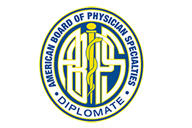Lower Limb Lengthening

What is Limb Lengthening?
Limb lengthening is a reconstructive procedure where the deformed bone is straightened or missing bone is replaced. It is performed in children and adults who have variations in their leg length because of diseases, injuries or birth defects. Limb lengthening procedure can be performed by minimally invasive techniques and may require hospitalization for 1-2 nights.
Indications for Limb Lengthening
Children born with congenital defects such as fibular hemimelia (absence of fibula bone), congenital short femur and hemi-atrophy (absence of one side of body part) have unequal leg lengths which can be treated with a limb lengthening procedure. Other conditions which can be corrected by limb lengthening procedure include:
- Growth plate injuries
- Bone infections resulting in leg length variations
- Broken bones followed by trauma
- Replacement of missing bone after surgical removal of bone tumor and fracture
- Increasing the stature in dwarfs by lengthening both the legs
The process of increasing the bone length depends on tissue and bone regeneration. When the bone is pulled apart, it tends to regenerate at the rate of approximately 1mm per day. There are two phases of lengthening until the bone is healed: distraction phase and consolidation phase.
The distraction phase involves lengthening of the bone. Consolidation phase involves hardening and calcification of this new bone which is still weak due to lack of calcium.
Limb Lengthening DevicesThere are two types of devices available, external fixators and internal fixators. The external devices are attached to the bone with wires or threaded pins. The internal devices are placed inside the body, on the bone or inside the bone marrow.
Limb Lengthening Process
The procedure involves:
Surgery: During surgery, a small incision is made to gain access to the part of the bone to be cut. A hospital stay of 1-3 days may be required after which rehabilitation and application of splints will be done.
Distraction Phase: Bone lengthening begins a few days or weeks after the surgery. With the use of external fixators, the patient or family member performs small twists or by applying pressure on the leg. When the bones are pulled apart, new bone gradually starts to grow between the bone ends. The rate of growth is usually 1mm per day. X-rays are obtained every 2 to 3 weeks to check for new bone growth, nerve and muscle function, and to avoid any further complications.
Consolidation Phase: After achieving the required length, all adjustments made to the device are stopped. The newly formed bone is weak and will tend to break without the support of external or internal devices. Lengthening over nails (LON) is used as an external device. This device remains in the bone until distraction phase. After removal of LON, an internal rod is placed at the end of the bone for support. The rod hardens the newly formed bone. The function of the internal device automatically stops after reaching a desired length. Bone healing is evaluated with X-rays that are obtained once a month. The X-ray shows the amount of calcium present in the bone. After the bone is healed the rods are removed.
Removal of the External Fixator: The removal of the external fixator device is done either under general anesthesia or with the patient awake. After removal, a cast made of plaster of Paris (POP) is placed for a month for protection. No cast is placed for patients with an internal fixator device as the support placed internally protects the bone.
Complications of Limb Lengthening Surgery
Bone complications include:
- Delayed union or non-union: Bone healing is delayed due to damage of bone tissues at the time of bone cutting.
- Premature consolidation: Itoccurs when the bone healing is abundant or fast.
- Axial deviation: Itoccurs because of unbalanced forces that bend the bone during the lengthening process.
Soft tissue complications include:
- Muscle contractures: Thisoccurs when the soft tissues cannot adapt to the changes in bone length.
- Passive stretching and soft tissue mobilization:Pain medications should be taken 30 minutes before therapy to reduce discomfort.
- Muscle weakness: Itis caused by lack of movement because of inability to walk normally.
- Nerve injury: This occurs when certain nerves do not stretch in coordination with the bone lengthening.








